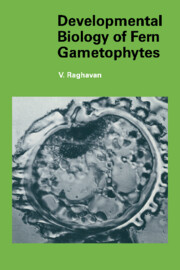Book contents
- Frontmatter
- Contents
- Preface
- Abbreviations
- 1 Introduction
- PART I THE BEGINNING
- 2 The spore – beginning of the gametophytic phase
- 3 Physiology of spore germination
- 4 Cell determination and morphogenesis during germination
- 5 Biochemical cytology and biochemistry of germination
- PART II GROWTH AND MATURATION
- PART III REPRODUCTIVE STRATEGIES
- PART IV DEVELOPMENTAL OPTIONS
- References
- Author index
- Subject index
4 - Cell determination and morphogenesis during germination
Published online by Cambridge University Press: 11 September 2009
- Frontmatter
- Contents
- Preface
- Abbreviations
- 1 Introduction
- PART I THE BEGINNING
- 2 The spore – beginning of the gametophytic phase
- 3 Physiology of spore germination
- 4 Cell determination and morphogenesis during germination
- 5 Biochemical cytology and biochemistry of germination
- PART II GROWTH AND MATURATION
- PART III REPRODUCTIVE STRATEGIES
- PART IV DEVELOPMENTAL OPTIONS
- References
- Author index
- Subject index
Summary
It is now reasonably clear that the dormant fern spore is a thick-walled, tetrahedral or bilateral cell enclosing a partially dehydrated cytoplasm with a centrally placed nucleus surrounded by other organelles and storage granules. The relationship of this basic structure to the first asymmetric division during germination is the subject of this chapter in which we shall also define those inherent and experimentally detectable aspects of spore polarity that may serve as a basis for the morphological differentiation that follows. The cytology of spore germination leaves little doubt that identical genetic information is transmitted to the two cells which are born out of a simple mitotic division of the spore nucleus. Yet, these cells follow dissimilar pathways of differentiation – one gives rise to the rhizoid, the other to the protonema initial – suggesting that each nucleus is exposed to a different milieu. Thus, it seems likely that cell differentiation during spore germination may be understood in terms of visible structural or cryptic physiological or biochemical differences in the cytoplasm.
The areas of discussion delineated for this chapter have their roots in classical morphological investigations on the germination of spores of diverse ferns made during the past hundred years or so. However, only recently has it been possible to pose the relevant questions in physiological terms.
- Type
- Chapter
- Information
- Developmental Biology of Fern Gametophytes , pp. 54 - 82Publisher: Cambridge University PressPrint publication year: 1989



